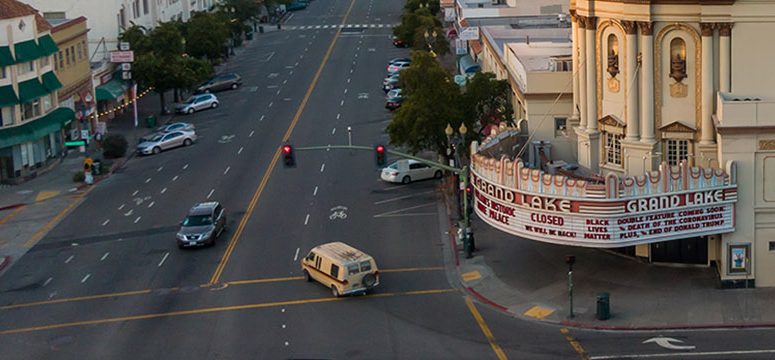Why do some city spaces seem to exude joy while others seem so lonely?
Jason Roberts at Bike Friendly Oak Cliff in suburban Dallas has some theories. And he uses one of those sad-sack parks -- Oak Cliff's Bishop Arts Pocket Park -- as an example:
I’m referencing this project because it’s often cited by an area property owner as to why public space projects are failures. Also, the owner cites the “private space” as being a better steward of the land, though one could simply drive up and down Davis Street in North Oak Cliff and point out endless private edge failures. On closer inspection, it’s fairly simple to see why the Bishop Arts pocket park is unused. First off, let’s address the basics:
Size: Approx. 40'x40'
Edges
North side: Davis and Bishop Street t-intersection
South side: Parking lot
East side: Parking lot
West side: Non-active edge of building
Amenities: Concrete semi-circle bench, abstract art, trash can, 1 park bench facing South parking lot.
When creating public space, there are a handful of focus points that must be addressed to help create an active area which include: 1. Safety. 2. Shared Access. 3. Stay Power (8-80 Rule)
Here’s a break down of the grade for each: Safety grade: F
Right off the bat, you’ll notice the pocket park faces Bishop and Davis Streets. If you are a parent with small children does this edge look or feel safe as a place to linger? At night, car lights will be facing you, and no separation (outside of the curb) prevents a vehicle which is t-boned at this intersection from encroaching onto the public space.
As an example of a more successful public space, Roberts holds up a similarly sized park in Silver Spring, Maryland, which features bollards to enhance safety, movable chairs and tables that invite people to linger, and edges that engage with nearby businesses.
Elsewhere on the Network today: Joseph Rose at Oregon Live teases some useful information out of TTI's recent Urban Mobility Report, which found that Portland averted 6.9 million hours of gridlock and $151 million in lost productivity thanks to its transit system. World Streets is using street furniture as a lens to examine the pedestrian friendliness of cities. And The City Fix explains the four distinct generations of innovation that have produced current bike-sharing technology.






